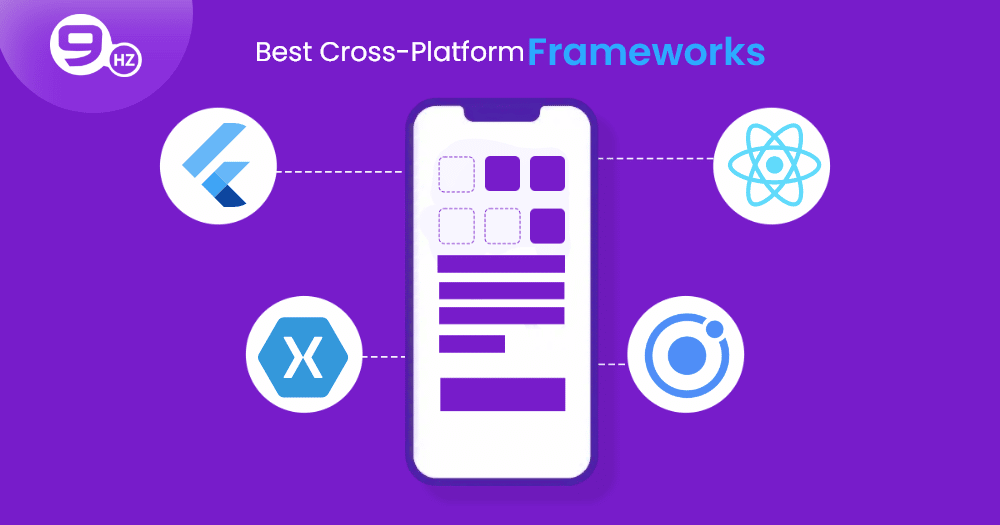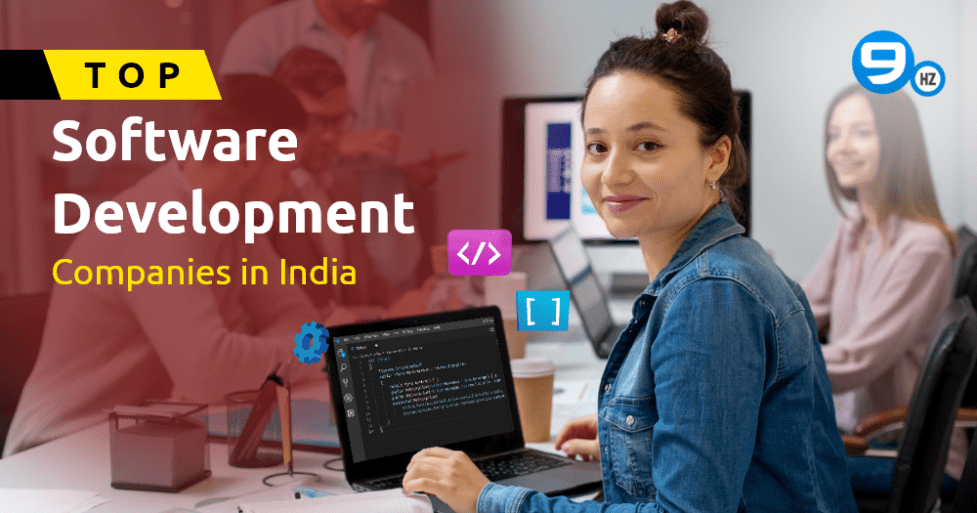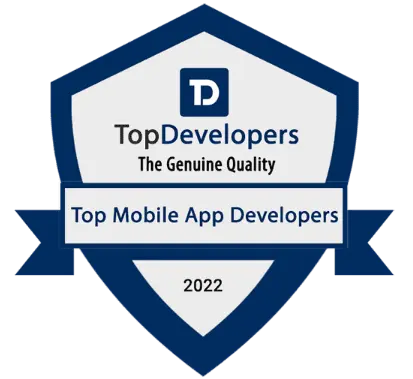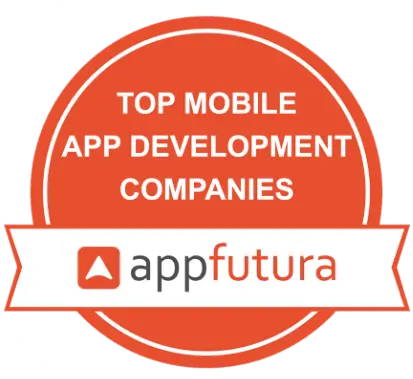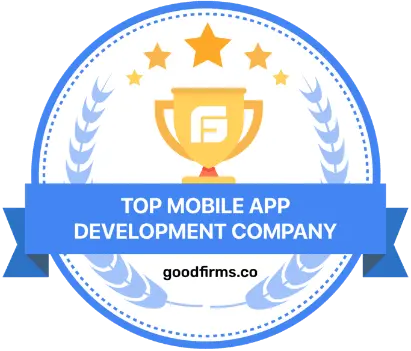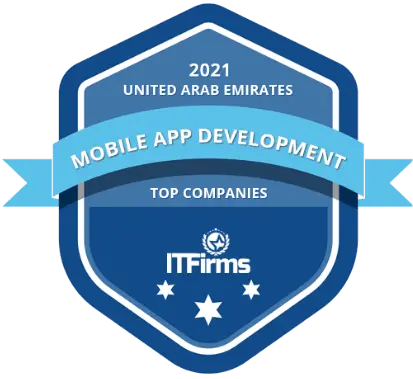We are heading for the era of digital-first business, and how your business procurement management works reveals more about business efficiencies for controlling operational activities. Procurement management refers to a strategic initiative that involves tracking efficient resource acquisition to save costs and develop a compliance process. For instance, if any big college institution is looking to integrate an ERP system to support its administrative tasks, the procurement process helps to identify needs, select suppliers, negotiate prices, and process payments.
According to the latest insights released by Amazon Business, more than 95% of decision-makers acknowledge the need for procurement optimization, while 85% of respondents share their concern about sourcing suppliers with sustainable practices. Businesses operating on a large scale are opting for a procurement tracking system to maximize their efficiencies with an increased cash flow, time savings, and resource allocation. So, investing in procurement management software covers all bases to get rid of paper trails, vendor management, more transparency, no shipping delays and eliminate risks. Procurement software replaces this drawback with automation for more accountability and visibility. Additionally, integrating logistics software development services ensures seamless coordination between procurement, inventory, and supply chain operations, further optimizing efficiency.
Some popular tools for procurement tracking systems are Precoro, SAP Ariba, Ivalua, Jaggaer, Pipefy and Procurify. But how can this software optimise the process? Here is the blog to have a closer look at how procurement management can help businesses track any inefficiencies and secure a valuable model.
What is Procurement Management Software?
Procurement management software, also referred to as procure-to-pay software, manages the entire operational lifecycle. This software automates sourcing, purchasing, and handling goods and services for the company’s operation. It helps organizations handle any inventory shortage by tracking transaction data and informing users with automated reminders for purchase orders or cancellations.
Businesses can avail procurement software as a package suite for them specialised for a specific process. So you can examine your existing procurement infrastructure to find the right fit for the market. Here are some common types of procurement management software:
- Purchasing Software: It is designed to automate your buying process with measures of requisition, order tracking, approvals to ensure more efficiencies for procurement workflows.
- RFP Software: This is a procurement portal software that helps professionals create requests and vendor bids and receive more responses. It comes with built-in templates, automation, and scale AI implementation for more efficiency.
- Source-to-pay Software: It comes up as an end-to-end procurement management solution to manage the entire vendor outsourcing to payment cycles.
- Contract Lifecycle Management Software: This software provides contract templates, digital signatures, a contract repository, and multiple vendor collaboration to support contract creation, negotiation, and approvals.
- Vendor Management Software: It possesses a centralised system for vendor onboarding, performance tracking, communication, and manages relationships with suppliers to structure your operations.
Key Features of Procurement Software
Procurement management software is no longer an optional strategy; it serves as the cornerstone to achieve efficiency with actionable insights. Businesses navigate through options in the dynamic software market to look for core features that bring software with a definite solution from the rest. Here are the top features of the procurement management platform:
Centralized Workflow
These features demonstrate a unified procurement process through automation and integration capabilities. It combines approval workflows, purchase requisitions, and order processing, reducing risk and manual intervention. Real-time insights help with decision-making, resource allocation, and identifying opportunities.
Supplier Management
Most procurement software aims to find the right supplier that aligns with the organization’s objectives. This feature entails tracking supplier efficiency in terms of reliability and service quality. It helps mitigate supplier-based risk with proactive identification, assessment, and scenario modeling, safeguarding organizational goals.
Spend Analytics and Management
With this feature of procurement management software, organizations can track their spending activities and better control and oversee expenses. An advanced analytical tool identifies patterns and implements cost optimization techniques for negotiation. Businesses can use it for budgeting and resource allocation.
Cloud-Support
Compatibility with cloud-based procurement can help offer more scalability, expanding operations to new locations or branches. This feature helps stakeholders access key information related to procurement activities anytime and anywhere. It also facilitates automatic updates and feature enhancements for regular maintenance and security.
User-Interface
Most businesses look for dynamic procurement management software with flexible navigation, layout, and intuitive workflows. User-friendly interfaces can increase productivity, reduce errors, and enhance user satisfaction. This software offers customizable dashboards, online forms, streamlined workflows, and analytical tools. Additionally, a mobile-responsive procurement tracking system reviews supplier catalogs and real-time data.
Benefits of Using Procurement Management Systems
For small to large businesses, procurement software plays a crucial role in managing the entire supply chain and enhancing operational efficiencies. With a structured system, it leverages automation to reduce time and risk, improve compliance, and support better decision-making. When combined with supply chain software development services, businesses can build customized solutions that streamline procurement workflows, enhance supplier collaboration, and optimize inventory management for a more resilient and agile supply chain
Here, we are listing the top benefits of procurement management:
Cost Effectiveness
Implementing the right procurement system can result in a cost advantage with automation and patterns, and businesses can aim for strategic supplier negotiation. Traditionally, manual processes increase labor and administration costs, but procurement management software cuts down expenses through automation and order processing.
Increase Efficiencies
Structured procurement can increase operational efficiencies for businesses. Implementing a procurement management system reduces manual interventions, errors, and paperwork. As a major task handled through automated workflows, stakeholders can focus on strategic activities for decision-making.
Compliance Management
Another advantage is advancing compliance security by aligning with internal guidelines and established regulations. Procurement software comes with automated check-ins, non-compliance risk, and a standardised and transparent process. In case of disputes or audits, this can generate real-time tracking details and data to proactively adhere to regulatory requirements.
Supplier Collaboration
An integrated procurement system acts as a centralized platform to connect with reliable suppliers and build long-term relationships. By integrating performance tracking for suppliers, it can assess their contribution and identify key areas for improvement. Using a procurement tracking system establishes the right framework to negotiate with suppliers and reduces the risk of contract breach, adding more transparency.
Agile Decision-Making
Procurement management software can directly transform business agility, so it can swiftly adapt to changes and make decisions based on market and customer demands. AI and analytics add more flexibility, allowing for market shifts with real-time insights to navigate uncertainties and explore more opportunities.
Why Develop Your Own Procurement Management Software?
Procurement or Supplier Management Software is designed to automate buying, supplier identification, contract management, and inventory tracking. Due to its versatile uses, cost management, and informed decision-making, businesses can estimate an ROI for investing in this software, which will be high. Also, it can integrate with other software like Enterprise Resource Planning (ERP) or Oracle or SAP to establish the entire procure-to-pay cycle at one destination.
Now, if businesses are looking to develop their own procurement portal software, it can create better coordination with the finance team, suppliers, and executives. This software provides ease of use, accessibility and collaboration between buyers and suppliers through automated onboarding. Developing in-house will reduce the risk of data breach, as only internal users can access key suppliers, manage the order process, record keeping, expense management, and ensure compliance and control.
No major risk is associated with developing your software, and it allows for consistent integration with the supplier database, ERP, payment gateways, and logistics platform. Also, adding an advanced solution like a procurement relationship management system to manage vendor profiling, performance tracking, and a collaborative space.
Here are the best reasons to opt for internal development:
- To establish a unique procurement workflow with the existing supplier management process
- It can easily adapt to industry-specific solutions and comply with internal policies
- Flexible integration with the existing system of inventory, accounting and ERPs
- Developing your software can be costlier, but it provides long-term savings compared to recurring subscription fees.
- It can maintain control over access to procurement-related data and sensitive information required to comply with industry regulations and compliance.
- You can migrate data internally between departments to create an advanced dashboard and report based on business KPIs and insights for procurement cycles.
How to Choose the Best Procurement Management Solutions?
While selecting the right procurement management software, businesses should determine what they are looking for. Not just a basic feature, there are certain other factors influencing this decision to measure software’s efficiency. So, you can consider the following points to find the ideal software for your procurement management system:
User-Friendliness
If your business regularly deals with suppliers and generates a large number of transactions, procurement management software should be easy to use for multiple users. So, look for a procurement solution with less complex features that can operate across all levels of the organization and consistently create, approve, and track documents.
Customisation
It can be another factor in finding the ideal procurement software offering customisation for features, processes and users. The procurement process is bound to mark changes and modify details based on new requirements and changes to the contract. This helps to generate a custom report that allows tracking of metrics for supplier performance.
Integration
Procurement software should allow integration with business tools like ERP, accounting, and payment tools to ensure smooth operation and inter-department collaboration. Any software offering APIs that allows integration with other systems brings more flexibility and is ideal for long-term process efficiencies.
Data Security
An ideal procurement solution should be compatible with handling sensitive data, including financial transactions, supplier information and internal budget. It should ensure security measures with reliable cloud hosting, backup, multi-factor authentication, and SSO capabilities for only authorised access.
Customer Support
Businesses constantly change in terms of process, features, and user expectations. So, reliable software should have responsive customer support to assist with immediate challenges. Multiple support channels comprise online chat, email support, a help center, and video tutorials. This allows the team to utilize the system’s compatibility, reduce downtime, and maximise productivity.
Future Trends in Procurement Management Systems
Businesses are focusing on achieving the top level of efficiency for their operations management. With constant technological advancement, sustainability, and risk assessment, the procurement process is evolving at a much faster rate. Here are some of the key trends for procurement management systems:
Digital Transformation
Companies are adopting digital tools to manage 50% of their operational activities. So, we can witness more updates with automated repetitive tasks like supplier selection or contract processing, as well as reduce cycle time and process efficiencies. Regular updates and digital advancement can result in real-time collaboration with suppliers and responses to change.
Artificial Intelligence
One remarkable technology is AI tools that analyse data and predict trends. AI can handle streamlining activities such as demand forecasting, inventory management, and supplier selection and allow the team to focus on strategy. It can also bring more updates into supplier evaluation for performance, pricing, and quality metrics.
Global Sourcing
Businesses are stretching their limit for suppliers to the global level, breaking barriers for the domestic market. Global sourcing for procurement is coming as a robust system to handle diverse suppliers and mitigate risk for the international market. It opens a new door of innovations, tech and reduces dependencies on a specific region helping to avoid monopoly.
Cybersecurity
Digital Procurement processes increase the risk of cyberattacks, phishing scams, and malware targeting supply chain partners. If procurement lacks cybersecurity measures, this can result in financial loss, reputational damage, and even legal proceedings. To save the integrity of the supply chain, they require multi-layered procurement with password policies, regular updates, and backups.
Sustainability
One of the emerging trends for procurement practices is sustainability. Organizations are relying on environmentally friendly measures and ethical sourcing. It can be a major shift in establishing long-term business success and social responsibility. Businesses are collaborating with suppliers who share common sustainability goals to drive positive change for the supply chain.
Why Choose Ninehertz to Develop a Procurement Management System?
If you are looking for the best software development company using AI-driven measures and data analytics, NineHertz is your reliable partner. Our customized solution builds long-term relationships with suppliers and vendors through procurement management software. We are a dedicated team of experts and developers who can develop the best procurement application and software that fits your budget and integrates features of purchase orders and compliance management.
NineHertz can assist you with the development of purchase order software, spend analysis tools, contract lifecycle management tools, eProcurement platforms and supplier scorecard software. With more than 15 years of experience, an expert team of developers are ready to transform your traditional operation with automation and deliver more than client expectations. Trusting NineHertz for our development process for supplier management software can result in more visibility, real-time management, integration, navigation and logistic operations.
We bring excellence to the software development industry by delivering more than 1300 projects that fit your budget, deadline and achieve the milestone of over 90% client retention!
Industry-Specific Use Cases
As procurement software upgrades with AI and ML-based technologies, there is an extended demand across industries. This brings innovative changes to how enterprises source materials, manage suppliers, manage risk, process transactions, and improve performance. Implementing a digital procurement management system can simplify a complex global supply chain with automation.
Let’s discuss specific use cases of procurement software based on industry:
Manufacturing: Automate Process
Implementing AI into the procurement system for manufacturing has redefined the process with predictive forecasting, automated contract analysis, anomaly detection, supplier risk assessment, and purchase pattern analysis. GenAI contributes with supplier scorecards for evaluation, RFP or Request for Proposal responses to track pricing and timelines and contract briefings.
Retail and eCommerce: Order Tracking
This industry is experiencing high customer demand and transactions. Procurement software can streamline the requisition process and identify suppliers. Whether it’s a retail, wholesale, or D2C business, integrating procurement software can save costs and improve efficiency with automated workflows, spend analysis, and supplier management.
Healthcare: Supplier Management
For healthcare, procurement software helps to automate the process, ensuring consistent medical supplies and coordination between pharmaceutical vendors. By implementing this system, businesses can manage their spending analysis, negotiation support, and bulk purchasing without any risk and delays.
Construction: Project Management
For construction-related businesses, procurement management can facilitate tracking materials online and negotiating for the best deal. It can deliver to multiple construction sites with budget control measures for real-time cost monitoring. This also acts as a communication tool for real-time collaboration among team members and smooth integration with other project management tools.
Food and Beverage: Inventory Management
This industry creates high demand for tracking inventory levels, demand prediction and optimising ordering to reduce waste and stockouts. Integrating software can deliver ingredients and materials on time with the right suppliers, offering better negotiation. It manages the supply chain to generate buying orders with real-time monitoring, historical sales, and forecasting.
Comparing Procurement Software Solutions
Does all procurement software provide the same benefits? Not really! Companies can focus on specialised procurement services like procure-to-pay or source-to-pay and differentiate based on functionality, benefits and purpose.
Here is the table for comparing procurement software solutions, and for a detailed comparison, we have taken the example of real procurement solutions to demonstrate:
| Feature | SAP Ariba | Coupa | Oracle Procurement Cloud | Jaggaer |
|---|---|---|---|---|
| Best For | Large enterprises with global supply chains | Mid-to-large enterprises seeking spend management | Enterprises using Oracle ecosystems | Organizations needing tailored procurement solutions |
| Key Features | Supplier management, sourcing, and contract management | Expense management, spend visibility, and budgeting | Procurement contracts, supplier risk management | E-sourcing, supplier collaboration, analytics |
| Integration | Integrates well with SAP ERP and S/4HANA | Integrates with most ERP and financial systems | Seamless with Oracle Cloud applications | Compatible with various ERP systems |
| User Experience | Moderate learning curve, comprehensive features | User-friendly, intuitive interface | Comprehensive but complex | Flexible UI, customizable workflows |
| AI & Automation | Advanced AI for supplier insights | AI-driven expense management | AI for risk analysis and predictive analytics | AI for spend analysis and supplier recommendations |
| Pricing | Custom enterprise pricing | Subscription-based, scalable plans | Custom enterprise pricing | Flexible pricing models based on modules |
| Compliance Management | Strong compliance tools for regulated industries | Extensive compliance features | Robust compliance with industry regulations | Excellent for risk management and audit trails |
| Customer Support | 24/7 support and dedicated account managers | Strong support network and training resources | Comprehensive enterprise support | Support plans with customization options |
| Scalability | Highly scalable for multinational enterprises | Scales well for mid-to-large companies | Ideal for large-scale enterprises | Flexible and scalable for various industries |
| Mobile Access | Mobile app available | Strong mobile capabilities | Mobile app with advanced approval features | Mobile-optimized platform |
| Customization | Limited customization without SAP consultants | Highly customizable through API integrations | Moderate customization options | High customization with tailored modules |
Real Life Examples for Procurement Management Software
Many companies or enterprises have taken an early step in integrating procurement management software for innovation and sustainability, and automating the supply chain. Here we have real company-based examples of how successfully they are integrating procurement management software:
Walmart
Being one of the top leaders in the retail industry, Walmart demonstrates effective use of procurement software, advancing supply chain management, managing supplier relationships with AI-powered chatbots for negotiation, and quoting the best prices. More than 80% of suppliers find this system more authentic and straightforward. Walmart has actively set up advanced technology and data analytics to optimize the supply chain. Collaborating with Coupa, it optimises their source-to-pay process to save cost, simplifies the system and enhances ease of use.
Unilever
Named after the multinational FMCG company, Unilever focuses on innovation and sustainability. An effective procurement process helps accomplish goals like zero carbon emissions. It introduces “Procurement with Purpose,” focusing on establishing strong partnerships with suppliers and following ethical practices. They are proactively managing the supplier relationship with tools like reverse online auctions and standard applications to achieve cost efficiencies.
Amazon
One of the centers for procurement and supply chain excellence, Amazon is investing in automation technologies for Amazon Business to optimize efficiencies and reduce costs. The company is rolling out eProcurement to manage suppliers, negotiate terms, and place orders. AI-powered robotics helps handle warehouse operations, handle the entire procure-to-pay cycle, and perform risk assessment. Amazon focuses on user-driven tactics to excel in B2B sales. It comprises cognitive buying assistants, intuitive catalogues, business intelligence, and virtual procurement agents to guide external sourcing.
Conclusion
The demand for procurement management software will continue to rise as businesses outsource materials and services and establish relationships with suppliers. Implementing a procurement management system helps skilled negotiators to count on favourable terms for suppliers, saving more cost and establishing efficient operations. Some of the leading procurement software includes Basware, Zycus, SAP Ariba, Jaggaer, Oracle, Microsoft Procurement and Coupa Software. From AI integration to cloud computing, help build transparent, predictable, and automated spending workflows for procurement management applications to empower supply chain sustainability and resiliency.
Frequently Asked Questions
What is procurement software?
It helps businesses manage purchasing by automating orders, tracking costs, and handling suppliers, making the process faster and more efficient.
How does it improve efficiency?
It reduces manual work, speeds up approvals, automates workflows, and helps manage suppliers, leading to fewer errors and faster procurement.
Is it useful for small businesses?
Yes, it helps small businesses control costs, track purchases, and manage suppliers efficiently without needing complex systems.
What key features should I look for?
Important features include supplier management, order automation, contract tracking, spending reports, approval workflows, and integration with accounting systems.
How does it ensure compliance?
It enforces approval rules, keeps detailed records, tracks supplier certifications, and ensures all purchases follow company policies and regulations.

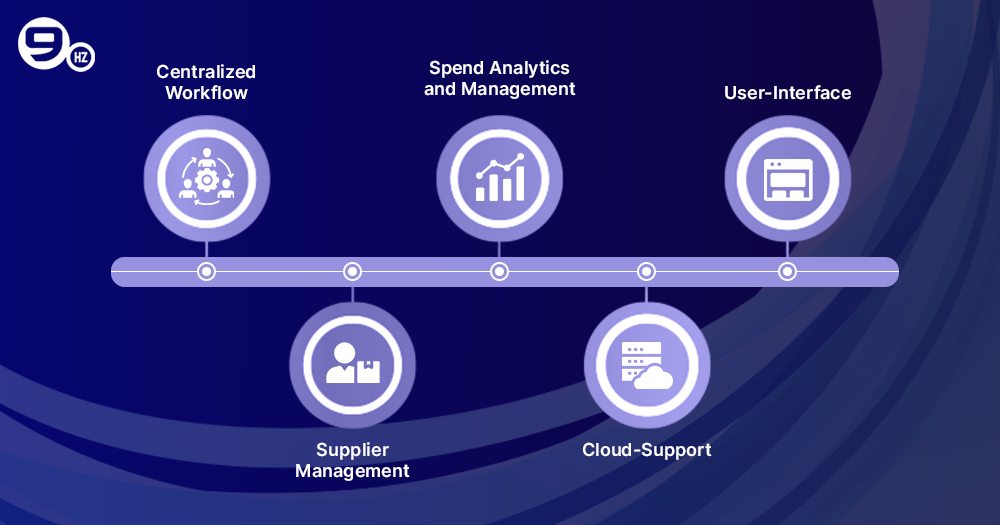
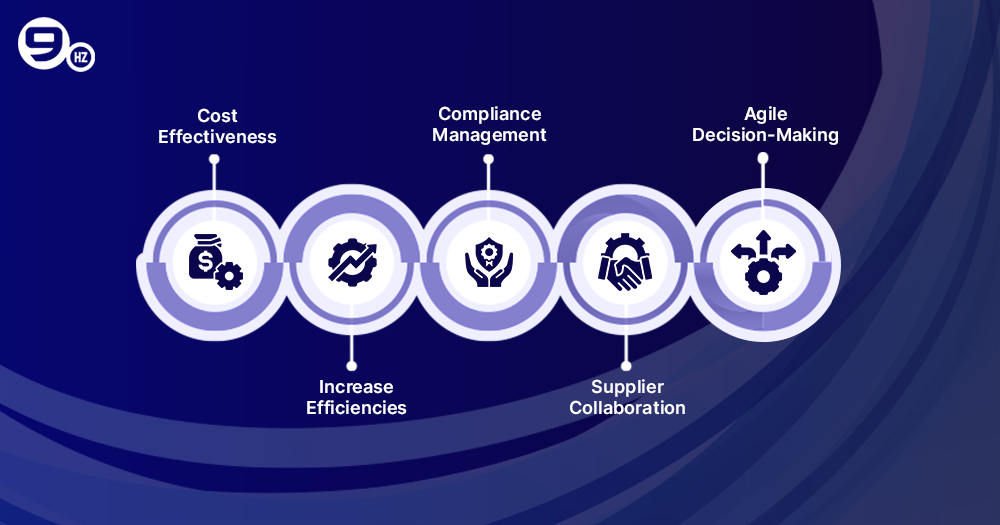
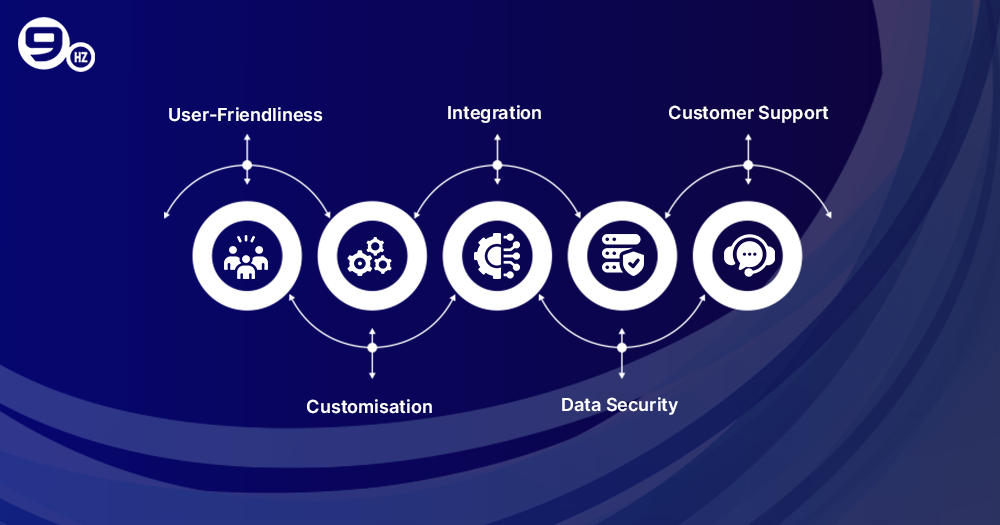
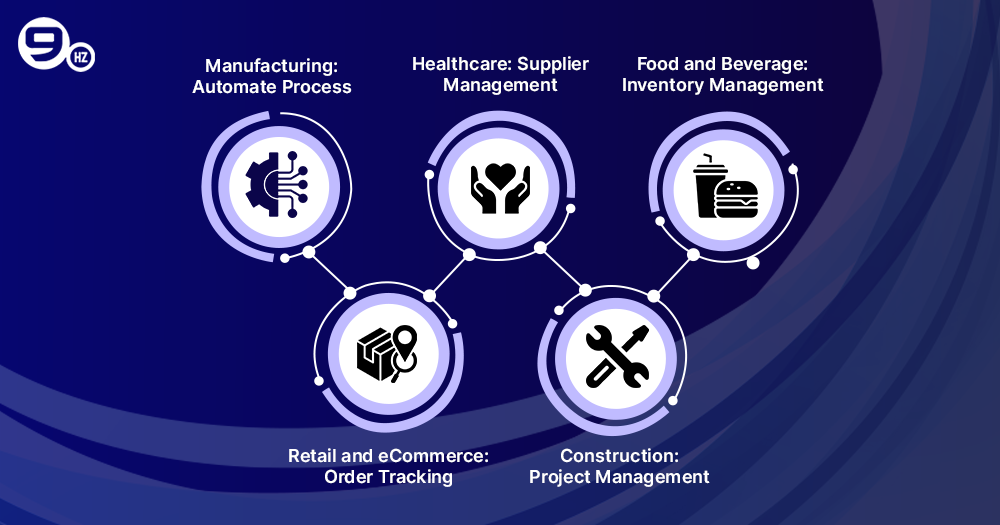
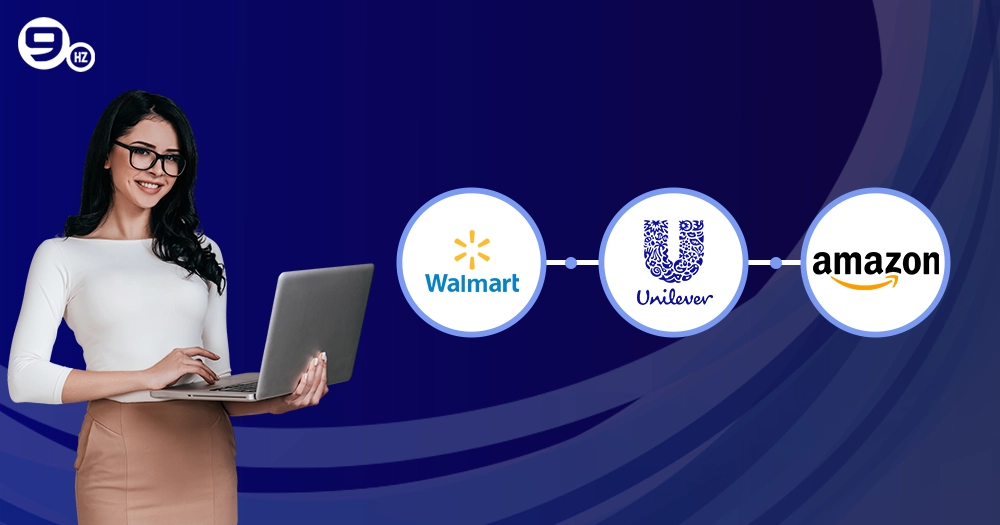
![How to Create an App like Careem? [Cost in 2025]](https://theninehertz.com/wp-content/uploads/2024/09/how-to-create-an-app-like-careem.webp)
